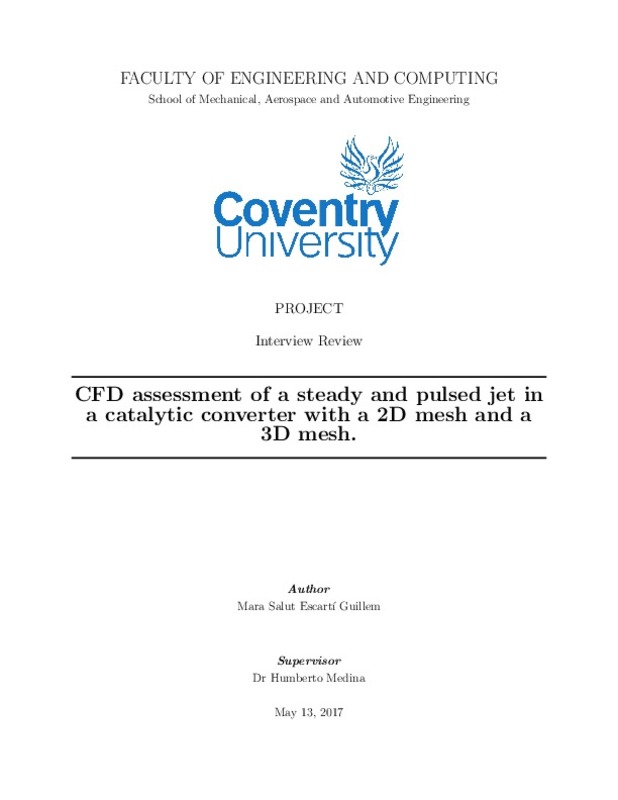JavaScript is disabled for your browser. Some features of this site may not work without it.
Buscar en RiuNet
Listar
Mi cuenta
Estadísticas
Ayuda RiuNet
Admin. UPV
CFD assessment of a steady and pulsed jet in a catalytic converter with a 2D mesh and a 3D mesh
Mostrar el registro completo del ítem
Escartí Guillem, MS. (2017). CFD assessment of a steady and pulsed jet in a catalytic converter with a 2D mesh and a 3D mesh. Universitat Politècnica de València. http://hdl.handle.net/10251/142924
Por favor, use este identificador para citar o enlazar este ítem: http://hdl.handle.net/10251/142924
Ficheros en el ítem
Metadatos del ítem
| Título: | CFD assessment of a steady and pulsed jet in a catalytic converter with a 2D mesh and a 3D mesh | |||
| Otro titulo: |
|
|||
| Autor: | Escartí Guillem, Mara Salut | |||
| Director(es): | Medina, Humberto | |||
| Entidad UPV: |
|
|||
| Fecha acto/lectura: |
|
|||
| Resumen: |
[ES] Debido al aumento de la contaminación de los automóviles, la industria automovilistica ha incluido convertidores catalíticos en sus tubos de escape. Pero el comportamiento de flujo dentro del monolito catalítico y en ...[+]
[EN] Due to the increase of cars pollution, the automotive industry has included catalytic converters to its exhaust gases in the vehicles. But the flow behavior inside of he catalytic monolith and in the diffuser affects ...[+]
|
|||
| Palabras clave: |
|
|||
| Derechos de uso: | Reserva de todos los derechos | |||
| Editorial: |
|
|||
| Titulación: |
|
|||
| Tipo: |
|
recommendations
Este ítem aparece en la(s) siguiente(s) colección(ones)
-
ETSIADI - Trabajos académicos [9093]
Escuela Técnica Superior de Ingeniería Aeroespacial y Diseño Industrial







